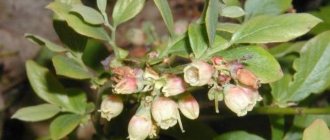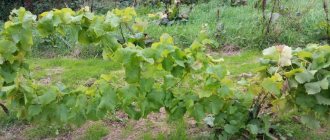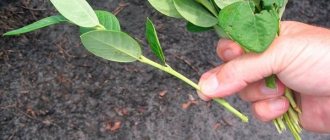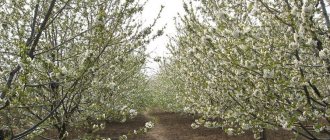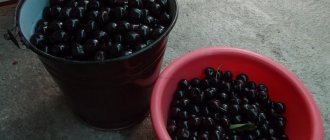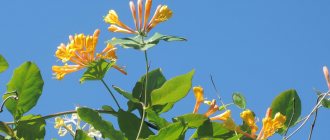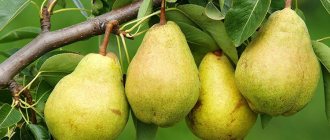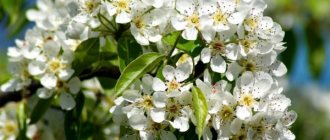Loading…
Loading…
Caring for and growing wisteria in the Moscow region is a difficult task. The plant is one of the most beautiful ornamental vines. It attracts gardening enthusiasts with its wonderful spring blooms, covered in large, fragrant inflorescences of delicate purple, pink, white, lilac or blue. A sufficient number of sunny and warm days is considered an important condition for the flowering of vines. In order for wisteria to bloom in the conditions of the Central region, it is important to provide it with special care conditions.
Kinds
Let's look at the classification in more detail. Wisteria belongs to the legume family. Various species of this plant form a whole genus called Wisteria.
Let's take a closer look at which wisteria will grow best in the Moscow region:
- Blue sapphire. This species has a densely leafy vine. Under natural conditions, the plant can reach a height of 15-20 meters. Wisteria of this species has large, odd-pinnate leaves. The young shoots of the plant are strongly drooping, but over time they become completely smooth. The flowers have a soft purple color and are collected in loose tassels that can reach a length of 20-30 cm.
- Alba. Perennial deciduous wisteria. Caring for and growing this variety in the Moscow region does not present any particular difficulties. The plant has many flowing shoots that can grow up to 25 meters in length. The stems of the crop are quite massive and can reach a diameter of 30-35 cm. Over time, they become lignified. At the initial stages of growth, you can direct young shoots in the desired direction. Once hardened, it will no longer be possible to give them the desired shape.
- Wisteria floribunda. Wisteria of this type is characterized by abundant flowering and a large number of flowers. It is a relatively small woody vine. Growing wisteria in the Moscow region with proper care and timely pruning allows you to achieve amazing results. The plant can reach 8-10 meters in height. Wisteria is abundantly covered with large leaves consisting of 11-19 leaflets. Interesting fact: the stems of the plant curl only clockwise. The diameter of the stems at the base is 20-30 cm.
- Macrostachia. This plant is native to North America. It differs from previous species in its large, dense flowers. The value of this species lies in the fact that it was used as the basis for such frost-resistant varieties as Clara Mac and Blue Moon.
- Blue Moon. What does this species represent? Frost-resistant wisteria Blue Moon in the Moscow region grows much better than other hybrids. It has increased resistance to low temperatures. This allows wisteria to survive winter well even when the thermometer drops to 40 degrees below zero. This variety is a rapidly growing deciduous tree-like vine. The length of the stems can reach up to 8 meters.
Popular species to grow
There are five types of wisteria , which are classified as horticultural crops:
- Chinese
- Japanese (profusely flowering)
- beautiful (Blue Moon)
- shrubby
- carpal
In the Moscow region, St. Petersburg and central Russia, the first three bloom well . In the north of Russia and Siberia, unfortunately, this plant is unlikely to take root: growing it in places where the air temperature in winter drops below 30 degrees is not recommended.
So, let's take a closer look at each of the three types:
- Chinese - will withstand frosts down to -20! Beans about 15 cm in size begin to bloom and bear fruit 3-5 years after planting. Reaches a height of more than 20 meters in length.
- Japanese wisteria (profusely flowering) is the shortest sister of all species: it reaches a height of only 5-9 meters. The short length is compensated by abundant flowering, a large number of small flowers, and long large leaves;
- beautiful and its variety of macrostachia Blue Moon or Blue Sapphire is a relatively recently bred variety by American geneticists, which, according to them, should withstand frosts of more than 37 degrees below zero. But, as experience shows, even Blue Moon does not always manage to survive in harsh conditions, but she will definitely survive in the Moscow region.
So, you’ve decided on the variety, now you need to figure out planting and care.
Prospects for growing wisteria macrostachy in the middle zone
Four years of observation of our wisteria vine, of course, do not yet provide grounds for drawing categorical conclusions about various aspects of its cultivation in the middle zone. It remains to be found out: where on the territory of our country are the northernmost borders that allow the successful cultivation of wisteria macrostachy “Blue Moon”. Even the microclimate of a specific area will play a role here, not to mention regions and regions.
In the conditions of our garden, wisteria “Blue Moon” in just four years created a gorgeous green wall on a support and a “ceiling” in the family recreation corner (see title photo).
All about wisteria
on the website Gardenia.ru
All about vines
on the website Gardenia.ru
Weekly Free Digest of the Gardenia.ru Site
Every week, for 10 years, for our 100,000 subscribers, an excellent selection of relevant materials about flowers and gardens, as well as other useful information.
Subscribe and receive!
(unsubscribe with one click)
There are plants that capture our imagination and remain in our memory for a long time, like an unearthly miracle that descended to us from the heavenly gardens. Among them is wisteria, or wisteria.
Plant in the garden: how to plant?
Many people are interested in how frost-resistant wisteria will grow in the Moscow region. Proper cultivation and care begin with choosing a seedling and preparing for planting. For cultivation, it is necessary to prepare slightly alkaline, loosened soil. It should be well drained before planting. It is worth considering that wisteria will grow better on fertile soils. Before digging, you need to add a little complex mineral fertilizer.
Wisteria becomes more resilient with age. What is frost-resistant wisteria afraid of in the Moscow region? The care and cultivation of this plant must be carried out taking into account one important requirement: this crop does not tolerate drafts. Landing should be organized in a windless, comfortable place.
A recess of at least fifty centimeters should be prepared. A good layer of drainage must be laid at the bottom. This will provide the plant roots with reliable protection. This way they will not be flooded by groundwater.
We are preparing wisteria to winter in Russia, the Moscow region and the region
If possible, it is better to plant wisteria in special containers and bring it into the house , because it is relatively frost-resistant.
If it is nevertheless planted in the soil, then you need to unfasten it from the support, put it on the ground and cover it with soil, and cover it generously with leaves and spruce branches on top. The older your vine is, the more resistant it will be to withstand frost.
Successful planting and beautiful flowering vines. As you can see, it’s possible to grow wisteria in the Moscow region.
{SOURCE}
Botanical description and homeland of the plant
Wisteria or wisteria is a perennial, beautifully flowering tree-like vine-shrub of the Legume family. During flowering, it is so majestic and elegant that you literally freeze at the sight of it.
Powerful tree-like shoots-branches reach a length of about 10 m, they rush in different directions, curling clockwise with the presence of support. Young stems have thin and pubescent skin. With proper pruning, it is possible to grow a wisteria tree up to 20 m high with a flattened crown - during flowering, a fragrant, colorful dome is formed. The leaf blades are imparipinnate, consist of 9-19 oval lobes, the total length varies between 15-35 cm.
When does wisteria or wisteria bloom?
Blooming wisteria floribunda 'Okayama' photo
Charming clusters of wisteria, fragrant with a sweet aroma, appear in the spring. Repeated flowering occurs at the end of August-beginning of September, although less lush.
Undoubtedly, the most important advantage of the plant is its luxurious inflorescences. The brushes hanging down are 30-50 cm long, and in some specimens they stretch up to 0.8 m. The shape of the corollas is typical for legumes: two-lipped with moth-like petals, the size ranges from 2-2.5 cm. Moreover, they bloom simultaneously (only at the tip brushes contain unopened flowers), creating an extravaganza of blue-violet hue.
There are varieties with snow-white and pale pink inflorescences. Weightless floating brushes will not leave indifferent even people who are clearly immune to colors. There are wide possibilities for decoration: building facades or, conversely, unsightly walls, fences, specially created structures. If we consider that there are two flowerings per season, the last doubts are swept aside. Some varieties of wisteria or wisteria can withstand frosts down to minus 20 °C, which will allow the plant to be introduced into the culture of central Russia.
Wisteria fruits with seeds photo
The fruits are long pods with beans. They are poisonous and strictly prohibited for consumption. The plant itself exudes beneficial phytoncides into the environment that fight pathogenic microbes (they even kill the tuberculosis bacillus). The leaves of the plant have an antibiotic effect.
Need good support
The total weight of wisteria can be 34 kg and it needs strong support. Thus, the largest representative with a distribution area of 0.4 hectares and weighing 250 tons is registered in Sierra Madre, California. In Japan, on the island of Honshu, in the Ashikaga Flower Park, you can fully enjoy the beauty of wisteria. There are all the necessary conditions, attentive care and care from gardeners.
Where does wisteria grow?
China is considered the beauty's historical homeland; it also grows in Korea and Japan. Some species introduced to America (eastern USA) have successfully gone wild. In the middle of the 18th century, wisteria or wisteria became known in Europe, where it has been actively cultivated since the 19th century.
History of the name
Why does the plant have two names? The official name Wisteria was received in honor of the American scientist and anatomy specialist Caspar Wister. Translated from Greek, "wisteria" means "sweet", which can be associated with the sweet aroma of the flowers or the high glycerol content in the beans (the substance is sweet to the taste).
Growing from seeds
What is special about this process? If you decide to grow wisteria from seed, you will need to be patient. This process is difficult and very long. For some time, flower growers even think that the seedlings have stopped growing. Young shoots can begin to grow only in the second year. If done correctly, flowering can be observed five years after planting. When growing some specimens, you have to wait up to ten years.
How does frost-resistant wisteria grow in the Moscow region? Caring for and planting this plant requires certain knowledge. It is recommended to plant seeds in late autumn. For sowing, a mixture of leaf soil, turf and sand, taken in a ratio of 4:1:1, is best suited. After planting, the soil should be well watered and covered with glass or film. This will achieve the greenhouse effect. Now the seedlings can be placed in a dark place with temperatures up to +20 degrees. Soil moisture must be maintained at the same level. After the first shoots appear, the container should be moved to a bright room. However, it is still better not to place young plants in direct sunlight.
When full-fledged leaves appear on the seedlings, they can be planted in separate containers. After transplantation, the seedlings are watered with a weak solution of potassium permanganate. This will kill pathogenic bacteria and germs. Planting in open ground is carried out in the spring. To do this, you should wait for persistent warming and choose a sunny place, well protected from drafts. Slightly alkaline nutrient soil is ideal for planting.
How to properly plant frost-resistant wisteria in the Moscow region? It is necessary to prepare a hole with dimensions of 50/50/60 centimeters. Then mineral fertilizers are added to the soil. Wisteria grown from seeds grows for quite a long time. Flowering on average begins only after 5-10 years. Wisteria requires moderate watering. Make sure the soil remains slightly moist at all times. The plant usually sheds its leaves in winter. During this period of time, watering should be stopped.
How to grow?
Dates and place for landing
To grow wisteria, choose a place with good access to sunlight. For improved flowering, it is recommended to create a 12-hour daylight period. The soil should be loose, well aerated without excess moisture. Drainage is laid at the planting site.
Important! To retain moisture at the roots of the tree, sprinkle the area around the trunk with chopped grass without seeds. .
Selection of planting material
Young seedlings are selected. Carefully inspect the roots of the plant to ensure there is no rot or other damage. The branches are dense, the stems are elastic. If pruning of the branches of a seedling is noticed, then it may be diseased. Branches and stems must be clean without uncharacteristic stains or mechanical damage.
Wisterias are also grown from seeds. But such a tree will bloom only after three years. Seeds and seedlings are sold in specialized agricultural stores.
Planting process
Wisteria is planted in containers or open ground. To plant in a pot, proceed as follows:
- Choose a pot with a volume of 40 liters or more, with a drainage hole and a stand.
- A small layer of soil is poured onto the bottom of the pot.
- Then a drainage is formed from coconut threads.
- Add warm water.
- Place the seedling after straightening the roots.
- Cover with soil in layers, compacting each layer.
- Water with warm water.
See also
Description of birch leaf spirea varieties, planting and care in open groundRead
Important! When using ready-made soil purchased in a store, there is no need to form drainage .
This method is used when it is impossible to store the plant in the open ground in winter. In summer it is recommended to plant it in fresh air. Also, in this form, the tree is inconvenient to transport.
Planted in open ground as follows:
- Prepare a hole 20-25 centimeters deep, 40 by 40 centimeters wide.
- Fill the hole with humus.
- The earth is mixed with sand.
- The seedling is placed in the hole.
- Sprinkle with earth in layers, compacting each layer.
- Water with warm water.
- Cut grass stems without seeds are placed on top around the trunk.
Planting a wisteria seedling "Blue Moon" and the first wintering
I bought wisteria macrostachia variety “Blue Moon” in the fall of 2008 from experienced gardener Andrei Milyaev. From him I received a wisteria seedling 50 cm high.
At first the plant did not grow much while it was taking root in the pot, but then it began to develop quickly. Therefore, in June, I transferred the wisteria from the pot to open ground - and it burst into growth.
Wisteria needs support for good growth and strengthening of its shoots. Therefore, I placed stakes next to the plant - it was easy to remove the vine from them in the fall to cover the plant for the winter.
During the first summer, my wisteria seedling “Blue Moon” grew five main shoots (2-2.5 m high) with many additional side shoots.
The soil in our garden is sandy, so I watered the wisteria generously. I fertilized the plant every 10 days, alternately with mullein and complex fertilizer.
Choosing a landing site
When planning to plant Blue Moon on your site, choose a suitable place - flowering, adaptation and well-being of the plant depend on this. Wisteria Blue Moon prefers well-sunny areas with light, well-drained soil. Drainage is necessary to prevent excess water from accumulating at the roots. This will ensure rapid growth of the plant. Large inflorescences will appear only when the day during the flowering period lasts twelve hours or more.
The sun should illuminate the plant for at least six hours a day, but the planting site should be protected from the north wind in winter and drafts in summer. Wisteria doesn’t like this and will definitely become capricious. Therefore, the site should be fenced on one side with a wall. The best option is to plant the plant near the southern wall of the house.
It is also necessary to prepare supports on which the vines will crawl and wrap around. Completely different materials will do. Place and twist them the way you would like your plant to look.
Care
How does frost-resistant wisteria Blue moon grow in the Moscow region? Reviews from experienced gardeners confirm that with proper care you can easily get a beautiful flowering plant. The main thing is to ensure that the soil moisture is maintained at an appropriate level. It should be light and loose. Additionally, it is worth adding nutrients to it. With a high lime content in the soil, the plant may develop chlorosis. This is expressed in excessive lightening of the foliage.
Wisteria tolerates excess water very poorly. If in spring the natural soil moisture is not enough, the plant can be watered. This will help prevent the buds from falling off. During the period of active budding, you should feed wisteria weekly with liquid fertilizers.
Wisteria transplant
Wisteria needs to be replanted using the transshipment method. Young plants - annually (up to 3 years of age) in a larger pot. In the future, replace the top layer (5 cm) with fresh and nutritious soil annually.
Plant wisteria. Even a small wisteria that decorates a yard in the Moscow region in summer creates a holiday of spring and beauty, gives joy and good mood.
Features of cultivation
Florists are constantly debating whether wisteria is a flower or a liana. Many are inclined to believe that this is a tree. Wisteria or wisteria, as it is also called, is native to the tropics and southern regions. The plant belongs to the legume family. Feels great in Crimea, Kuban and the North Caucasus. It is there that wisteria is used to create hedges, unusual tunnels and as a single plant.
When growing this exotic beauty in the Moscow region, you need to be prepared for the fact that you will have to put a lot of effort into creating conditions for the plant. Considering that flower buds form only on vines that are more than 6 years old, it is very difficult to achieve flowering of wisteria. Indeed, during a harsh winter, the entire above-ground part of the plant may die. Usually only the root system is preserved, capable of sprouting in the spring. In addition, rainy and cool summers and temperature changes also do not contribute to the wild flowering of the plant.
When optimal conditions are created, wisteria can bloom 2 times. The first time - in early spring, the second - in early August.
For normal development, a combination of important components is needed:
- temperature;
- light;
- moisture;
- feeding;
- protection.
If you make an effort and provide the wisteria with good care, you can achieve good results.
Despite the fact that wisteria looks like a vine, it does not grow particularly fast. In a year, shoots grow no more than 30-35 cm, and in 6-8 years the plant can grow to the roof of a house. The abundance of leaf mass can cover any wall. But the inflorescences, which reach 30-35 cm, simply amaze the imagination with their grace and beauty.
To grow wisteria in the Moscow region, you must first of all consider how to protect the plant in winter. The best option would be to use container growing. Depending on the age of the plant, you will need a container with a volume of 20 to 60 liters. In October, the container is brought into a room where the temperature is maintained at no lower than 2-5 degrees. In addition, the vine needs lighting. Water wisteria once every 6-7 days. It is not recommended to feed the plant in winter.
With the onset of spring (early to mid-March), the wisteria is taken into a room where there is a lot of light and watered every other day. At this time, they begin to apply fertilizing, and also spray the foliage with solutions to which growth stimulants are added. Wisteria grows in the same way in the Urals. Growing the southern guest is possible in any region of Russia. The main thing is to create appropriate conditions for it. It's not easy at all, but the blooming wisteria is worth it.
Many amateur gardeners, when growing plants from seeds in the Moscow region and the Urals, achieve flowering twice a year. However, the tree grows for a very long time, and it will take more than one year before it matures.
When growing wisteria, first of all, you need to choose the right variety . The best will be cold-resistant F1 hybrids. It is very good if the plant was grown from seeds under the same conditions in which it will continue to grow.
Planting and caring for wisteria flowers
If you intend to grow wisteria and admire its flowering for many years, then you need to follow some recommendations.
Growing from seeds at home
The seeds are in hard pods. Some boxes contain one, some contain two or three pieces. They need to be removed from there and soaked for two weeks . There is no need to take small seeds the size of lentils for planting; only large seeds will do.
Take a small container, for example, soy sauce or ginger from the set with rolls, put cotton wool in it, fill it with water and put in the seed. Then you need to cover the container with the seed with film to retain moisture and put it in a warm place.
The seed has sprung a root - it’s time to plant it in the ground . Wisteria, as already mentioned, loves air, warmth and moisture. This means that you need to prepare drainage for the sprout: put shells and sand at the bottom of the pot, then fill the pot halfway with peat, and another half with turf and leaf soil.
Then we cover the pot with the seed with glass to retain moisture and put it away for three weeks in a dark, warm place. After the allotted time, we dive the plant, waiting for two leaves to appear.
Wisteria grown from seeds begins to bloom no earlier than five years after planting .
But still, it is better, easier and more reliable to grow wisteria from cuttings, that is, in a vegetative way.
By layering
Wisteria is well propagated using layering. For such propagation, take a fresh shoot no older than one year in the spring, make a thin cut along the shoot through its entire length. Then the shoot is bent and placed in turf soil. At the end of summer, the established shoot is planted.
Recommendations
Many people are interested in the question of how to achieve luxurious flowering. Growing wisteria in the Moscow region largely depends on the correct location for planting the plant. To achieve a large number of lush flowers, wisteria should be in the sun for at least half a day. It is better to cover the plant for the winter. Although there are special varieties that can withstand frosts below 20 degrees.
Experienced gardeners recommend pruning the plant to obtain abundant wisteria blooms. This procedure should be performed at least twice. The first pruning should be done after flowering. During this procedure, all side shoots are shortened by 2/3 of their length. The second pruning should be done in the fall, when the plant sheds its leaves. At the same time, the side branches that were pruned in the summer are shortened. You should leave three to five buds on them. Some time later, inflorescences may appear on them. When growing wisteria in the middle zone, you need to take care of good shelter for the plant for the winter.
Types and varieties of wisteria in the Moscow region
Chinese wisteria blue sapphire
Blue sapphire in the Moscow region is a densely leafed vine, which in natural conditions can grow up to 15-20 meters in height. It has odd-pinnate, large leaves. Young shoots are densely pubescent, but after some time they become smooth. The flowers are pale purple in color and collected in loose clusters reaching 20-30 centimeters in length.
Latest articles about gardening
How to prepare a cellar for winter? How to prepare currants for winter? How to feed grapes in spring?
Wisteria alba
It is a decorative perennial deciduous vine. The plant has many flowing shoots that can grow up to 25 meters in length. Massive stems (up to 30-35 centimeters in diameter) become woody over time. In the early stages of growth, young shoots should be directed in the right direction, because after they harden, it will be almost impossible to give them the desired shape.
Wisteria wisteria floribunda in the Moscow region (profusely flowering, multi-flowered)
The abundantly flowering wisteria is a relatively small, woody vine. With proper care in the Moscow region and timely pruning, it reaches 8-10 meters in height. Abundantly covered with large leaves, consisting of 11-19 dense ovoid leaves and reaching up to 40 centimeters in length. Interestingly, the stems of the plant curl strictly clockwise, their diameter at the base is usually 20-30 centimeters.
Wisteria macrostachia (large-carpal)
Wisteria macrostachia is native to North America. It is distinguished from previous varieties by dense, large inflorescences. The value of this species lies in the fact that it served as the basis for the creation of two frost-resistant varieties: Blue Moon and Clara Mac. The first variety has become most widespread.
Wisteria frost-resistant blue moon
Blue moon wisteria is better suited than other hybrids for growing in the Moscow region, as it has increased frost resistance, which allows it to overwinter well even with temperature changes of up to -40°C. This variety is a tree-like, deciduous, rapidly growing vine, the stems of which grow up to 8 meters in length.
Description and types of wisteria
In various sources you can see the definition of wisteria as a flower or tree. But in reality it is a vine, with falling branches and a woody trunk. Under the right conditions, namely, in thoroughly drained soil, under the hot sun, the stem of this plant can grow up to 20 meters .
In their natural environment, wisteria is found in the warm climate of Asian countries - Japan and China. This plant has been planted in America for a long time. The young shoot has a rather thin stem; an adult vine can have a tree-like trunk with a diameter of up to 25 cm. On the trunk of the plant there are branches with lush leaves, collected from small leaves.
In summer, wisteria forms clusters of flowers. The inflorescences of different varieties of this plant differ in color - pure white, purple, blue. The flower has a rather complex shape that resembles an orchid. The very pleasant smell of the inflorescence is the reason for the name of the vine. "Wisteria" is translated as "sweet".
The fruits of the plant are pods with a fury coating . Due to the structure of the vine fruit, it belongs to the legume family.
Varieties
Today there are 10 varieties of Chinese wisteria that are found in natural conditions. Flower growers grow only ornamental vines. This is wisteria:
- Macrostachia. This hybrid was bred specifically for cold climates - North America, Russia, Scandinavia. The plant is frost-resistant. On a personal plot it creates an excellent braiding of gazebos, terraces, and house facades. The brushes are 35 cm in diameter and consist of lilac inflorescences with a pronounced scent.
- Alba. This type of wisteria blooms with white clusters. The aroma is slightly worse than that of other hybrids, but the pure white inflorescences are more expressive; they are planted in city squares, in different flower arrangements;
- Chinese. This variety produces quite beautiful clusters with fragrant bluish inflorescences. In the garden plot, this plant climbs near the pillars of the terrace, gazebos, and various frames;
- Floribunda. This is a Japanese variety of plant that looks like a vine with 45 cm tassels of various colors. There are also dwarf species of this vine. They grow much longer, creating a bush-like shape that is great for bonsai;
- Beautiful. The hybrid, which was obtained after the selection of the first two varieties, absorbed their best qualities. The flower racemes are longer, up to 30 cm, the flowers are larger, pure white.
Trimming
In the first years, long thin shoots appear on the inflorescence. At a more mature age, the plant begins to become woody. The shoots are covered with dense bark. Flower buds, as a rule, are formed in the lateral and thinner branches. They should be especially protected. To do this, rejuvenate the plant by thinning out the branches. Proper pruning of wisteria will be the key to obtaining a luxurious, abundant appearance of buds.
Every year after spring flowering, it is recommended to heavily prune last year’s shoots. Their length should not exceed thirty centimeters. With the onset of August, the growth of the previous year should again be shortened by 4-5 buds. The pruning procedure as a whole is not particularly difficult. If you do it every year, you can easily get luxurious, fragrant branches.
Systematic pruning will help you form wisteria into a standard tree in a short period of time. In this case, it should be planted taking into account the provision of access to the plant. The form should be chosen so that it is suitable for indoor growing.
Wisteria care in the Moscow region
From spring to late summer, watering is moderate, the soil should be slightly moist all the time. The soil should be light and rich in nutrients. Chlorosis (lightening of leaves) often develops on calcareous soils.
Wisteria does not tolerate excess water. In dry spring, plants should be watered well so that the buds do not fall off. During the period of budding and flowering, feed with liquid fertilizer once a week.
For luxurious flowering, wisteria should be in the sun for at least half a day. They require shelter for the winter. But some varieties can withstand frosts down to -20°C. To increase the abundance of flowering, wisteria needs to be pruned at least 2 times.
The first pruning is carried out after flowering, shortening all side shoots by two-thirds of their length. The second one is done in the fall after leaf fall. At the same time, the pruned side branches in summer and those that appeared after summer pruning are shortened, leaving 3-5 buds on which inflorescences will appear. In central Russia it requires good shelter for the winter.
Latest articles about gardening
Lavender in a pot: care at home Lemon tree: care at home
Leaf roller on an apple tree: how to fight?
Blue Moon Care
Wisteria loves water, but does not tolerate waterlogging.
The most frequent watering for shrubs is required during the period after planting, flowering and growing season (from June to September). If during this period the soil moisture is insufficient, flowering may stop, and in some cases, inflorescences may not form at all. In December, watering should be stopped .
For lush and bright flowering of wisteria, fertilizing is necessary. Typically, both mineral and organic fertilizers are used. They are used alternately during the flowering period, but not more often than once every 3 days.
- mineral fertilizer is diluted in a ratio of 1:2 per 1 m2 (20 grams of fertilizer is taken per 10 liters of water);
- organic fertilizer is diluted in a ratio of 1:20 (1 part fertilizer and 20 parts water). You can also fertilize with chalk solution: 100g. For 1 bucket of water.
In order to give the vine its shape, pruning can be used . In the spring, the bush is cleared of everything unnecessary: dead twigs and leaves, areas affected by disease or frost. The shoots located above the 5th bud are also removed. In addition, the branches can be trimmed based on your personal preferences - to give the crown the desired appearance. At the same time, it is worth considering that wisteria grows quickly; on average, it grows by 2.5 m per season.
In mid-summer, the lateral shoots are cut off by 40–50 cm to create volume. In the fall, shoots are pruned for a more comfortable winter. After flowering, the shoots are cut and tied so that the tips of the branches do not dry out.
It is worth noting that an adult plant cannot be replanted . Firstly, this is problematic due to its rapid growth, and secondly, in most cases, wisteria dies after transplantation. Transplantation is carried out only as a last resort, taking all precautions and, at the same time, cutting off the branches.
Watch a video about caring for wisteria:
Reproduction
This aspect deserves special attention. Today, many gardeners are interested in growing wisteria in the Moscow region. To propagate plants, the grafting method is used. It is done on the roots, since wisteria has too loose wood. Horizontal layering is also considered a fairly effective method of propagation. The lower shoots in the fall after the leaves have fallen should be pruned and pinned to the ground. A layer of soil is placed on top of them. Only the tops of the shoots are left on the surface. In the spring, when the buds begin to bloom, the shoots are looped from the side of the mother plant. Once the plant has developed a new root system, the cuttings can be separated. If the roots grow insufficiently, shoots can be grown within another year.
Winter cuttings can also be used to propagate wisteria. The optimal period for cuttings is considered to be from February to March. Pre-prepared shoots are split in half along the axis. From these halves, small cuttings are then cut, the length of which does not exceed five centimeters. There should be one bud in the middle of the cutting. Pots or boxes are used to root shoots. The cuttings should be immersed in the ground with their buds up at a distance of 4-5 cm from each other and sprinkled with a small layer of sand on top.
Propagation by seeds is considered the most difficult. They must be sown in a greenhouse from December to January. The seed propagation method has its advantages. It is best suited for northern areas. However, the decorative properties of the plant may not be preserved during such cultivation. Nevertheless, in the Moscow region this method can give excellent results. Some seedlings even surpass plants obtained by other propagation methods in their decorative qualities. Such specimens can be used for breeding purposes. The best samples are selected from them, which are then used for cuttings.
Reproduction methods
Today, there are 4 ways to propagate wisteria: layering, cuttings, seeds and grafting. However, the latter method is used only in plant nurseries. The remaining methods are practiced by ordinary gardeners. In this case, the layering method assumes a spring-summer period, and cuttings and seed propagation are used exclusively in the spring.
Seeds
Sowing of planting material occurs in greenhouse conditions in the last days of November or in early December. Having not had time to sow in autumn, you can carry out the procedure in the spring, in the first days of March, but already in open ground, which is much better for the plant. The soil mixture for autumn planting is prepared according to a certain formula.
Take 4 parts of leaf soil and mix with 1 part of turf soil and sand. The first shoots will appear 25-30 days after sowing. After a week, the young shoots are exposed to a lighted area, but not under direct sunlight.
As soon as 2 leaves appear on the seedlings, the seedlings are transplanted to the beds. In winter, young seedlings must be covered. It is recommended to transplant the plant to a permanent location no earlier than next spring.
The process of growing wisteria from seeds is considered the longest. You will be able to see the beauty of flowering only after 15 years.
Cuttings
To propagate wisteria by cuttings, cut parts of annual branches of the plant, the length of which is approximately 20 cm, are suitable. To root the shoot, you will need to prepare a special substrate, which contains 3 parts of turf soil, 1 part of sand, 1 part of humus and 1 part of peat. The leaves are removed from the lower part of the selected cutting, leaving only 2-3 leaves at the top.
A hole 5 cm deep is made in a container with soil mixture. A cutting is installed in it. The earth around the hole is compacted. The top of the sprout is covered with a plastic bag or a cut plastic container. The planted cuttings are placed in a lighted place.
From time to time it is necessary to check the soil and moisten it if necessary. The cuttings will begin to form roots 5-8 weeks after planting. In just 5 years, wisteria will delight the gardener with exquisite inflorescences with an extraordinary aroma.
By layering
One of the strong perennial shoots is selected as a suitable cutting. An oblique cut is made in the middle. A pot with fertile soil is placed under the incision site. The shoot is fixed in the container using staples, then sprinkled with soil. The top of the cut branch is raised upward and fixed on a support.
Throughout the summer, the plant must be moistened. And by the last days of August, the cut seedling will have formed its own root system. The germinated cuttings are separated from the mother vine and transplanted to a permanent place of residence.
Frost-resistant wisteria in the Moscow region and central Russia
By its nature, the liana is thermophilic: it settles and takes root in the open ground of the subtropics; its favorite places are damp forests and river banks. Garden wisteria can be found along the Black Sea coast of the Krasnodar Territory and Crimea. In the conditions of central Russia there is a chance to grow cold-resistant species and varieties.
Wisteria macrostachya "Blue Moon" is the most common frost-resistant variety for growing in the Moscow region and central Russia.
Another option is indoor growing - wisteria bonsai looks simply amazing.
Necessary conditions for cultivation
The wisteria vine is grown in two ways: directly in the open ground or in large pots, containers, and vases. The second method is used in climate zones with unstable weather, such as late frosts. In this case, the flower can be moved indoors so that it does not die in frost.
Climatic conditions
A favorable growing environment for this tree-like vine is the humid subtropics. In the wild, it is found in some states of the USA, Japan and China. Acclimatized varieties grow in Russia. The Canadian variety Blue Moon is found in Crimea, the southern regions of Russia, the northern Black Sea region and even the Moscow region. It can be grown as an indoor flower regardless of latitude.
Location and lighting
Wisteria of this variety loves the diffused light of the sun, but too much shading or direct rays have a negative effect on the formation of buds. Choose a site oriented to the south, it should have a transparent fence. The duration of a sunny day, which wisteria needs for abundant flowering, is at least 12 hours.
How to plant wisteria in the garden
To grow wisteria, prepare slightly alkaline, loose soil that drains well. Remember that it is better to grow wisteria on fertile soils; complex mineral fertilizers are applied during digging.
Despite the fact that wisteria becomes more hardy with age, it does not tolerate drafts at all. Organize your landing with this requirement in mind.
For planting wisteria in the Moscow region, holes are prepared, the depth of which is at least 50 cm. A good layer of drainage is laid at the bottom to provide the roots with reliable protection from flooding by groundwater.
Growing wisteria from seeds takes a long time, so be patient. At first, it seems that the seedlings have stopped growing, only in the second year do young shoots begin to grow. If you are lucky, you can see flowering already in the 5th year of cultivation, although some specimens do not bloom for 10 years.
Landing
To plant wisteria in open ground, it is advisable to choose 2-year-old seedlings. In this case, they will cope with adaptation more easily. The frost-resistant variety is unpretentious to soils. The main thing is that it is not peat soil. Drained, slightly alkaline soil mixed with humus is considered ideal for planting. However, other types of soil are also suitable for planting. Important: if the soil is very sandy, abundant watering will be required in summer!
Planting in open ground:
- Dig a hole. Its depth should not be less than 25 cm.
- Place humus at the bottom of the hole. You can also add sand, rotted leaves or clay-turf soil.
- When planting, you should pay attention to ensure that the neck of the root is not lowered into the soil.
- Water the wisteria daily.
In order for the planted plant to quickly begin to develop its root system, dry grass can be spread around it. It will absorb moisture, which will help the flower take root faster.
Its flowering and survival rate depend on the location of wisteria. Gardeners advise planting wisteria in an area well lit by the sun. If there is a brick wall in the garden, it is advisable to plant the plant near it. The brick accumulates solar heat and warms the perennial.
How the summer goes for wisteria determines how it will survive the winter. Therefore, the more heat it receives during the warm season, the better.
Please note that the flower needs to be exposed to sunlight for at least 6 hours a day . Well, flowering will occur when daylight hours last for at least 12 hours.
Important: Wisteria does not tolerate drafts and cold winds. Therefore, on one side it must be separated by a wall. The best option would be to plant on the south side of the garden.
For a stable position, the vine must wrap around the support . The material for support can be any. The main thing is size. The support must be strong and large to support the weight of the vine.
Further cultivation of wisteria "Blue Bun"
The third season of Blue Moon wisteria in my garden was similar to previous years. The growing season of the liana proceeded in the same rhythm and quality: frosting in winter, spring pruning and maintenance under a greenhouse, long sleep of liana buds, good summer growth from July.
The fourth year of life of the Blue Moon wisteria was no different from the previous ones: everything was the same as in previous years (winter freezing, spring greenhouse and late awakening of the vine).
Since I was told by the seller that by the fourth winter the Blue Moon wisteria becomes completely winter-hardy, I placed a permanent metal trellis next to the vine.
Although I fertilized the wisteria little this summer, by mid-August it bloomed for the first time. But, unfortunately, its flowering did not last long. At the beginning of September, rainy, cool weather began, due to which some of the wisteria flowers simply could not open.
In the fall, I did not remove the vine from the trellis - I left it to winter. In the spring I discovered that the shoots of the plant had frozen to the level of the snow. Therefore, my five-year-old wisteria “Blue Moon” bloomed at a height of half a meter from the ground. But, again, it began to bloom only in August.
Why doesn't wisteria bloom?
A very frequently asked question: why doesn’t wisteria bloom ? Let's look at a number of reasons and possible solutions:
- It is normal for a vine obtained by growing from seeds not to flower for the first 10-15 years. It is optimal to purchase grafted plants or rooted cuttings from nurseries.
- If you carry out radical anti-aging pruning of an old vine, it may skip a flowering period or even more than one.
- Do not forget that an excess of nitrogen promotes the development of the green part, and the inflorescences appear scanty. If there is a need to feed plants from the wisteria tree trunk, it is better to wait until the vine finishes flowering.
- Do not forget about the light-loving plant; the bright sun of wisteria is simply necessary for normal development and flowering.
Wisteria
Wisteria or Wisteria belongs to the legume family. It is a beautiful climbing plant (rather even a liana), growing in abundance in East Asia and in the subtropical regions of North America. In nature, wisteria grows freely and reaches enormous sizes - 3-4.5 meters (according to some sources, up to 20 meters) and has up to 9 species.
Externally, wisteria looks very pretty: oblong leaves of light green color and young leaves with dense pubescence, densely clinging to the branches of the plant. All this splendor is decorated with long brushes (up to 30 cm) of light purple flowers. However, the flowers can also be white.
Wisteria species have different origins: the most popular is Wisteria sinensis (Sims) Sweet, and there is also the Japanese species Wisteria floribunda (Willd.) DC. and the North American species Wisteria frutescens (L.) Poir.
These species are the most popular among wisterias.
External characteristics
Wisteria is also called wisteria, after the Latin name of the genus.
In nature, the tree-like vine grows in Asia and North America. It is suitable for a subtropical climate with humid summers and warm winters. Thanks to this, many types of ornamental plants are grown in Crimea, on the Caucasian coast, and in the Krasnodar Territory. The average characteristics of various crop varieties are given in the table:
| Indicator name | Characteristic |
| Genus | tree climbing plants; |
| Family | legumes; |
| Row | deciduous vines; |
| Growing season | perennial plant (15 – 20 years); |
| Onset of flowering | in the 3rd – 4th year of planting a cutting or rooted seedling in a permanent place; |
| Flowering period | from late March to early May; |
| Maximum stem height | 17 – 20 m (can grow not only upward, but also spread horizontally along the support); |
| Leaf characteristics | odd-pinnate, up to 30 cm long, up to 10 leaves on a branch; |
| Characteristics of flowers | fragrant, collected in long clusters, bloom gradually from the upper buds to the lower ones; |
| Bud color | the most common is lilac; white, pink, and blue varieties have also been bred. |
Diseases and pests of wisteria
Wisteria can suffer from fungal infections caused by Aplosporella wistariae and Phomatospora wistariae:
- Excessive watering causes root rot to develop, causing the plant to wilt and may die.
- Also, tumors and abnormal sprouts appear on the roots or stems when infected with soil bacteria.
- Problems are easier to prevent: plant in a suitable area without dampness, loosen the soil after watering.
- Special fungicidal preparations help against diseases. The plant can also suffer from such a scourge as the underground clover mosaic virus and wisteria mosaic virus.
Dangerous pests include aphids, mealybugs, leaf rollers, Japanese beetles, and root nematodes. It is easy to get rid of the first trinity by treating with solutions prepared according to folk recipes: infusion of onion peels, wormwood, tobacco, tomato tops, etc.
As a result of the activity of nematodes, root gall nodes appear, so they must be removed quickly using special insecticides.
With Japanese beetles, also act immediately, since they gnaw holes in adult woody shoots, blocking the passage of moisture and nutrients.
Rules for planting wisteria
If conditions allow, then every gardener can
grow a wisteria flower If you follow the planting rules, then it feels great in urban conditions, and with proper care it tolerates wintering well. To grow a vine you need to choose a sunny place, but it also feels great in partial shade. But when choosing a place for planting, you should remember that the plant is very light-loving, and therefore it is worth choosing a site where the sun remains for at least 6 hours.
But it is necessary to protect it from wind and cold, so the best option would be to plant wisteria on the south side of the house.
When choosing a place for planting , you need to take into account the fact that wisteria is a perennial plant. Therefore, its further transplantation may cause some difficulties. Its root system goes deep into the soil at least a couple of meters. Therefore, it should be immediately planted in a permanent place.
Soil for wisteria
The flower has no special preferences in soil, but it is still worth planting it in moderately fertile, light and moist soil.
The soil must allow air to pass through and not retain water. Too much lime in the soil can cause the flower to die quickly. He begins to develop chlorosis, which is determined by the strong lightening of the leaves. The Chinese Blue Sapphire also does not need soil that is too nitrogenous , and therefore you should apply fertilizer as little as possible, otherwise it will not bloom.
In order for Chinese wisteria Blue Sapphire or any other plant to take root faster, you should prepare the soil yourself and pour it into the hole. To do this you will need three parts turf soil, one part sand and the same amount of peat. All this is thoroughly mixed and poured into the planting hole. The plant will quickly take root and will have enough nutrients in such soil.
Landing rules
Before planting abundantly flowering wisteria or another variety of plant in the ground, you need to soak the sprouts in water for half an hour. After this, you need to prepare a hole with dimensions of 50x50x40 cm. Pre-prepared soil is laid out at the bottom of the hole. You need to cover the plant with soil 10 cm deeper than it grew before transplanting. You need to lay bark on top of the soil.
Planting is carried out at a distance of 30 cm from a support or wall. Do not be afraid that the plant will not show signs of life for the first two to three weeks. It takes a very long time to get used to the new place and begins to grow. At first, Chinese wisteria takes root and all efforts go towards this process.
Sources used:
- https://sadovnikam.ru/414247a-morozostoykaya-glitsiniya-v-podmoskove-posadka-vyiraschivanie-i-pravilnyiy-uhod
- https://baseperevozok.ru/glicinija-v-podmoskove-otzyvy/
- https://chto-posadit.ru/glitsiniya-ili-visteriya-uhod-i-vyrashhivanie-v-podmoskove-i-srednej-polose-rossii-domashnih-usloviyah/
- https://sotka.guru/cvety/vyraschivanie-i-uhod-za-gliciniey-v-podmoskove-i-na-urale.html
- https://mir-ogorodnikov.ru/gliciniya-uxod-i-vyrashhivanie-v-podmoskove/
- https://baseperevozok.ru/glicinija-v-sibiri-vyrashhivanie/
- https://dacha.yarfotograf.ru/glicinija-vyrashhivanie-i-uhod-foto-v-sibiri/
